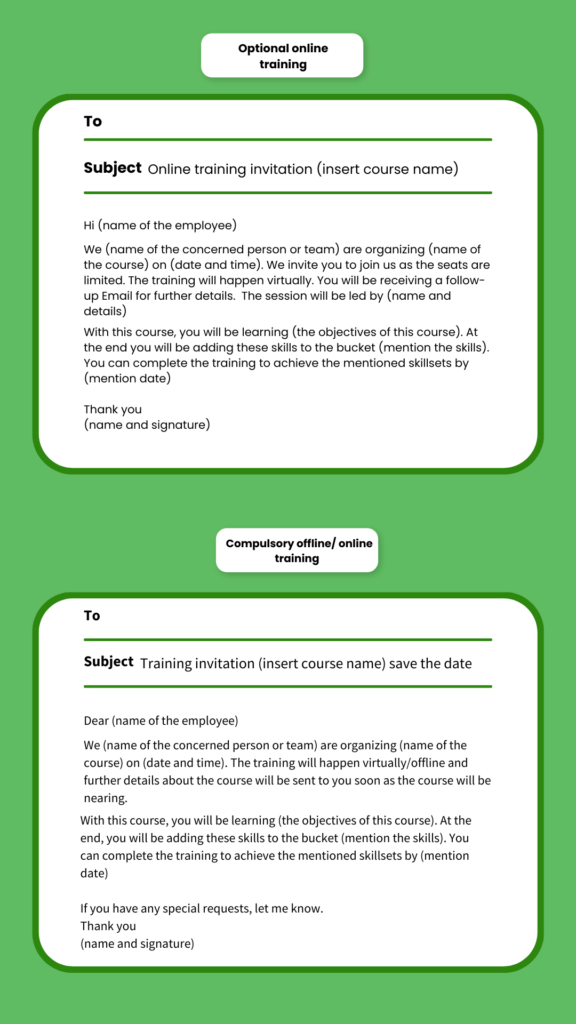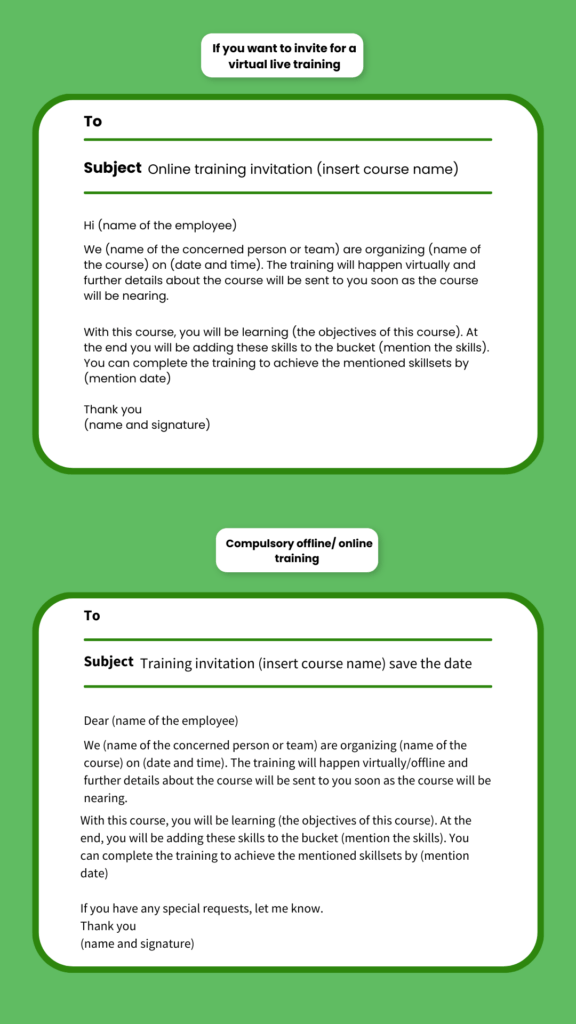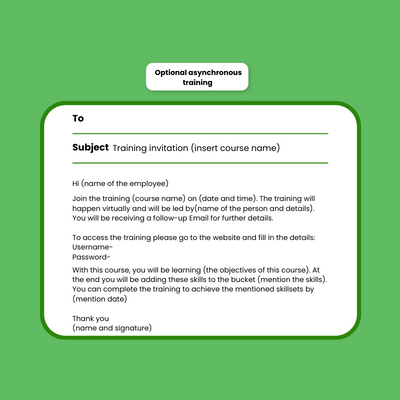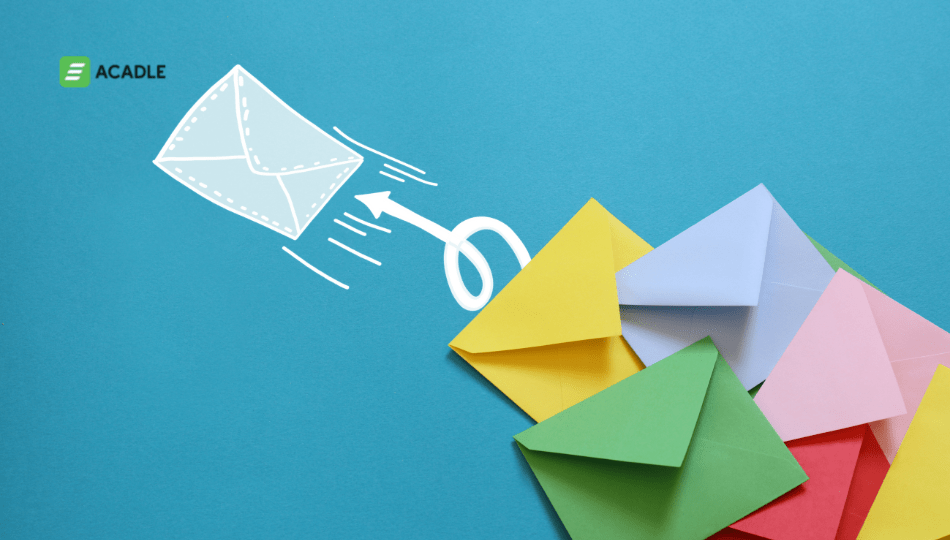Whenever you are building a training course for your audience, you must add a personalized touch to it so your audience is encouraged to attend. In this article, we will see different types of email templates that will help you with your training programs. For your next training program, you can now refer to the templates and make your task much easier, and process the training invitations faster.
Why must you send an Email?
The purpose of sending an email is to tell the audience how important the training program is. Also, it will be much easier to track down the path to the training by bookmarking the email.
If the training is optional, it will open the path for any confusion your audience must be having.
The content you need to add to the email templates
The content usually changes according to the different types of training you will be giving to your audience. But certain things do not change, like:
- The topic for the training program
- The details about the instructor
- What is the mode of training and complete details of the venue if it is offline?
- Further details like time and duration of the training program.
These are just a few details; other than that, you can add links to book the slots or add numbers for any further inquiries. The email template must also mention if the training is optional or necessary, what the deadline is to register, and other details like that. This way, you will make the onboarding of your audience much simpler without any complications.
You can also add value to the training invitations by adding resources to the same:
- You can add any clips from the previous videos or training programs to help them understand what the courses comprise.
- You can add testimonials from your previous audience to improve the credibility of your training program as well.
- When the speaker or trainer speaks of the program and what the audience can expect, it leaves a better impact.
- You can also show statistics to prove the positive impacts of your training.
- This will create an engaging loop with the audience and will help them
Focus on your target audience
You must be aware of who your target audience is, and you should send the emails accordingly. There should always be those minor changes according to your audience. if you are making a course for students, the invite will be different and if it is for your office colleagues, it will be entirely different. You must know what changes you need to make for each personalized message.
The ideal email invitation template
When you are writing the email, you must make sure that the tone is ideal and polite for the audience. The email must be setting the tone for your company. Let us see some examples of how your time should be assertive and how you can improve it.
Should not use
- The training is compulsory for everyone to attend.
- The training is given to fulfill the required targets.
- Everyone should complete the course within the deadline
Instead, you can use
- You must take advantage of the course.
- The training will help you improve your skillsets
- Kindly complete the course within the deadline mentioned.
The email represents your company and sending casual mail usually indicates that your company has been laid off.
Email templates
Here are the templates for invitations you can consider sending to your audience. You can refer to the copies and customize the content as per your requirements. We have listed some templates that you can see for reference:
Make sure you maintain the tone of your email and customize it according to your audience. Start engaging your audience from the first message itself, and it will help you establish a better relationship with your audience.



Steps to make the process easier
1. Include a subject
Always keep your subject to the point in the emails and make sure it tells everything about your training purpose. This makes it easier for the audience to decide whether they should attend the training or not.
2. Greeting
Always include a professional greeting for your audience. Do not get too informal in the introductory mail but you can keep changing that gradually depending on your audience.
3. Opening paragraph
State the purpose of the training and a few details in the first paragraph itself.
4. Write down your second paragraph
Include the reason for conducting the training and also the resources necessary. You can add videos, eBooks, or whitepaper as per the need.
The above given templated are not limited and you can make changes accordingly based on the points given in the article.



